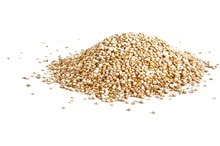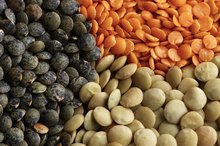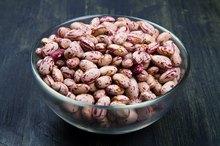What does fact checked mean?
At Healthfully, we strive to deliver objective content that is accurate and up-to-date. Our team periodically reviews articles in order to ensure content quality. The sources cited below consist of evidence from peer-reviewed journals, prominent medical organizations, academic associations, and government data.
- Centers for Disease Control and Prevention: Nutrition for Everyone – Protein
- MedlinePlus: Diet – Liver Disease
- Harvard School of Public Health: The Nutrition Source – Protein
The information contained on this site is for informational purposes only, and should not be used as a substitute for the advice of a professional health care provider. Please check with the appropriate physician regarding health questions and concerns. Although we strive to deliver accurate and up-to-date information, no guarantee to that effect is made.
The word “protein” may conjure images of bulky muscles and weight loss shakes, but neither accurately captures the significance of this macronutrient. Proteins are the building blocks of every cell and tissue in your body. They provide structure, catalyze hundreds of biochemical processes and make up the hormones your body uses to send messages between tissues and organs. The Recommended Dietary Allowance of protein for women depends on their current health status.
Complete, Incomplete and Complementary Proteins
Proteins contain smaller components called amino acids. Humans have 20 different amino acids that connect together in thousands of combinations to create individual proteins. Your body can make several of these amino acids on its own, but ones it cannot produce are referred to as “essential amino acids” because it is essential for you to obtain them from your diet. “Complete” proteins, typically animal sources, contain all essential amino acids. “Incomplete” proteins provide some but not all essential amino acids; two or more incomplete proteins consumed together to deliver all of the amino acids you require are referred to as “complementary proteins.”
- Proteins contain smaller components called amino acids.
- Incomplete” proteins provide some but not all essential amino acids; two or more incomplete proteins consumed together to deliver all of the amino acids you require are referred to as “complementary proteins.”
Daily Requirements for Adolescents and Adult Women
Amino Acids That You Can't Get from a Vegetarian Diet
Learn More
For most healthy individuals, protein should make up about 10 to 35 percent of the daily caloric intake, according to the Centers for Disease Control and Prevention. Adolescent girls, ages 14 through 18, and adult women need 46 grams of protein per day.
IRequirements for Pregnant and Breastfeeding Women
Pregnant women must increase their protein intake to both properly support fetal growth and fulfill their own daily requirements. The American Pregnancy Association recommends 75 to 100 grams of protein per day for pregnant women 1. This requirement decreases to about 71 grams of protein daily for breastfeeding women, according to the University of Illinois McKinley Health Center.
Other Special Conditions
USDA Recommendations of Protein in Diet
Learn More
Certain medical conditions can affect the amount of protein you need. For example, those with chronic kidney disease or severe liver disease have difficulty processing and excreting proteins and amino acids 2. Protein can eventually build up to toxic levels in the body and damage other organs, including the brain. Women with these conditions should follow diet plans as instructed by their health-care providers to ensure they receive sufficient protein while avoiding adverse effects.
- Certain medical conditions can affect the amount of protein you need.
- For example, those with chronic kidney disease or severe liver disease have difficulty processing and excreting proteins and amino acids 2.
Healthy Sources
By now you have most likely heard “lean protein” recommended on TV, in books and magazines and from your health-care provider. Lean sources provide necessary protein while limiting unnecessary fats and other additives. Healthy options include poultry, fish, beans and nuts. If your diet includes red meat, enjoy the leanest cuts in moderation to reduce you intake of harmful saturated fats. The Harvard School of Public Health also recommends limiting your consumption of processed meat, such as bacon and hot dogs, since they can contribute to certain cancers, heart disease and diabetes 4.
- By now you have most likely heard “lean protein” recommended on TV, in books and magazines and from your health-care provider.
- If your diet includes red meat, enjoy the leanest cuts in moderation to reduce you intake of harmful saturated fats.
Related Articles
References
- American Pregnancy Association: Pregnancy Nutrition
- Davita: Dietary Protein and Chronic Kidney Disease
- MedlinePlus: Diet – Liver Disease
- Harvard School of Public Health: The Nutrition Source – Protein
- U.S.D.A, Dietary Guidelines for Americans 2011
- U.S.D.A ChooseMyPlate.gov
- Haas, E. (1992) Staying healthy with nutrition. Berkley: Celestial Arts
- Holford, P. (2004) The new optimum nutrition bible. Berkley/Toronto: Crossing Press
- Nutrition for Everyone: Protein, CDC.gov
Writer Bio
Ann Jamerson began writing ads and informational brochures for research trials in 2003 during an internship at an alcohol and drug research center. She assisted in writing and editing manuscripts concerning the breast cancer genes and psychosocial effects on affected patients. She received her Bachelor of Science in biology from the University of California, San Diego and is currently attending nursing school.









